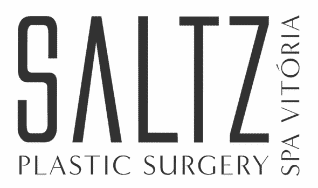
But now Dr. Saltz has a new way to put the beatdown on cellulite for up to two years. It’s called Cellfina™ and it’s a new weapon in the ongoing battle with cottage cheese thighs!
First, what the heck is cellulite? More importantly, why is it allowed to exist on my legs?
Let’s start with a definition right out of Merriam-Webster. It says this of “cellulite:”
Deposits of subcutaneous fat within fibrous connective tissue (as in the thighs, hips, and buttocks) that give a puckered and dimpled appearance to the skin surface.
You may know it more colloquially as “cottage cheese thighs.”
The thing about cellulite is it doesn’t give a rat’s behind about what kind of shape you’re in. If your skin construction is such, you’ll have cellulite, no matter how many thousands of miles you spend in spin class.
Cellulite affects over 90% of women. But it only affects less than 10% of men. That’s equally bogus.
Here’s the deal. Cellulite comes down to simple anatomy. Women have more body fat than men, which contributes to the problem. But it comes down to the connective bands that connect the skin and the muscle beneath. Men have thicker bands that form a crisscross pattern. This design keeps the fat in place and doesn’t pucker the upward skin.
Women, on the other hand, have vertical connective bands that tend to trap fat in pockets that resemble individual cells. The connective bands pull the skin down, and the fat in the little cells pushes the skin up around it. Dimples.
Here’s how Cellfina™ beats up on your cellulite
Cellfina™ is onto the tricks of those connective bands, and it’s not a fan. Kind of how it’s hard to be a fan of Cheap Trick or Styx nowadays, despite their 70s undeserved popularity. Cellfina™ targets those bands.
We start by applying a topical anesthetic to keep you comfortable. Then a suction stabilizer in the Cellfina™ system pulls the skin upward, stretching those dumb connective bands. Next, the Cellfina™ handpiece breaks those connective bands, releasing the skin from its formerly dimpled ways. We can’t tell you how Cellfina™ does it at Dr. Saltz’s office — we’d have to kill you if we you told you — but this proprietary technology releases the connection, and the skin rebounds upward. You could equate it to cutting a rubber band that was pulling downward in a particular spot. Once these bands have played their last call, the skin above shows noticeable less dimpling.
How long does Cellfina™ take, and does it hurt afterwards?
Cellfina doesn’t mess around; a procedure usually takes less than an hour. Afterward, there can be a little tenderness at the treatment locations, but so what — your cellulite has taken a beating!
Results improve with time
Satisfaction ratings of Cellfina patients are crazy high, and they grow with time.
- 85% of patients are satisfied after three months
- 94% at one year
- 96% after two years
So, you could avoid the pool or the beach. Or you could opt for 1920s-style swimsuits covering your legs down to the knee. Or, better yet, you could come to Dr. Saltz’s Park City or Salt Lake offices and get a Cellfina treatment! Call us for an appointment.



